
This is the second of a series of articles exploring the scientific deep state. Here, Dr. J Scott Turner will explore basic questions, including how many scientists are employed by the federal government, where they work, what they do, and what are their qualifications? Articles to come will present case studies of how the scientific deep state operates, and how it has become politicized.
The “scientific deep state” comprises roughly 360,000 federal civil servants who manage scientific programs for the federal government. Scientists are employed in every cabinet agency except Treasury, as well as in the so-called “large independent agencies” such as the Environmental Protection Agency (EPA) and the National Aeronautics and Space Administration (NASA). The scientific civil service employs more scientists than are employed by universities and colleges nationwide.
The question naturally arises: What does this army of scientists do?
The answer to this question sits precariously on a fundamental contradiction. Ideally, the civil service should be responsive to the executive they serve, and by extension, the public who elected him. Should this be true for scientists employed in the civil service? Isn’t science … science—irrespective of the ebb and flow of political fortune—after all? That is indeed the prevailing wisdom. Government agencies such as the Department of the Interior routinely mandate that policy be guided by the “best science available.” Responses to attempts to politicize science—ranging from the “Indiana π bill” to “Lysenkoism”—range from amusement to ridicule to alarm. Even so, government agencies, even scientists themselves, eagerly politicize science when there are benefits to be had—as in the case of climate change or public health.
In this article, I will look at the politicization of a segment of the scientific civil service that— by rights and logic—should be the most insulated from political capture: the National Institute of Standards and Technology (NIST)—formerly known as the National Bureau of Standards (NBS).
NIST is responsible for setting scientific standards of measure. What is the duration of a second? What is the length of the meter? What is the concentration of atmospheric carbon dioxide? Objective answers to those questions—and many more—is the value NIST provides to the public, irrespective of political climate. Even so, NIST is becoming politicized as all government agencies are. How has this happened?
The National Institute of Standards and Technology
NIST is a gem of the scientific civil service. Founded in 1900 as the NBS, NIST is responsible for setting so-called metrology standards—that is, how to measure things accurately and in standard ways. Consider what goes into defining the standard second. NIST does so by setting standards for the measurement of time— which, since 1940 or so— has been based on the vibration rate of the cesium atom cooled to near absolute zero. This sets the length of the standard second to a precision of one in one quadrillion. This is no trivial matter. Many aspects of our modern world— from accurate location mapping by GPS satellites to the coordination of millions of computers in our networked world—rely on having extremely accurate clocks, which requires rigorous time standards. The rigor and reliability of time is guaranteed by NIST’s atomic clocks.
NIST does similar work for a variety of measurement standards, ranging from measuring the concentration of atmospheric trace gasses to the accuracy of medical devices. This requires a very high level of scientific expertise. NIST currently employs about 3,400 federal civil servants, of which about 1,800 are physicists, engineers, mathematicians, computer scientists, and natural resource specialists—weighted heavily to doctorates in the so-called “hard sciences:” physics, engineering, mathematics, and information technology (Figure 1). It counts among its scientists five Nobel laureates. The institutional culture at NIST has always been science foremost, and there is a deep institutional pride in scientific excellence and demonstrated merit. One of my sources stated that while at NIST’s Center for Neutron Research, he had worked with “some of the world’s top neutron scientists.”
NIST sustains this reputation by insulating scientists and recruitment of scientists from the normal rules for competitive civil service. Staffing at NIST is governed by its own set of ranks and pay scales, known as the Alternative Personnel Management System (APMS). It consists of four “pay bands:” ZP (Scientific and Engineering Professional), ZT (Scientific and Engineering Technician), ZA (Administrative), ZS (Administrative Support). Each pay band consists of five ranks (I-V) through which staff can advance. There are additional provisions in the APMS for merit, recruitment, and retention bonuses for employees in the ZP and ZT pay bands. Recruitment for the scientific and technical pay bands operates through informal contacts with university doctoral programs, through the prestigious National Research Council Postdoctoral Fellowship program, and through outside scientists brought in for transient visiting appointments.
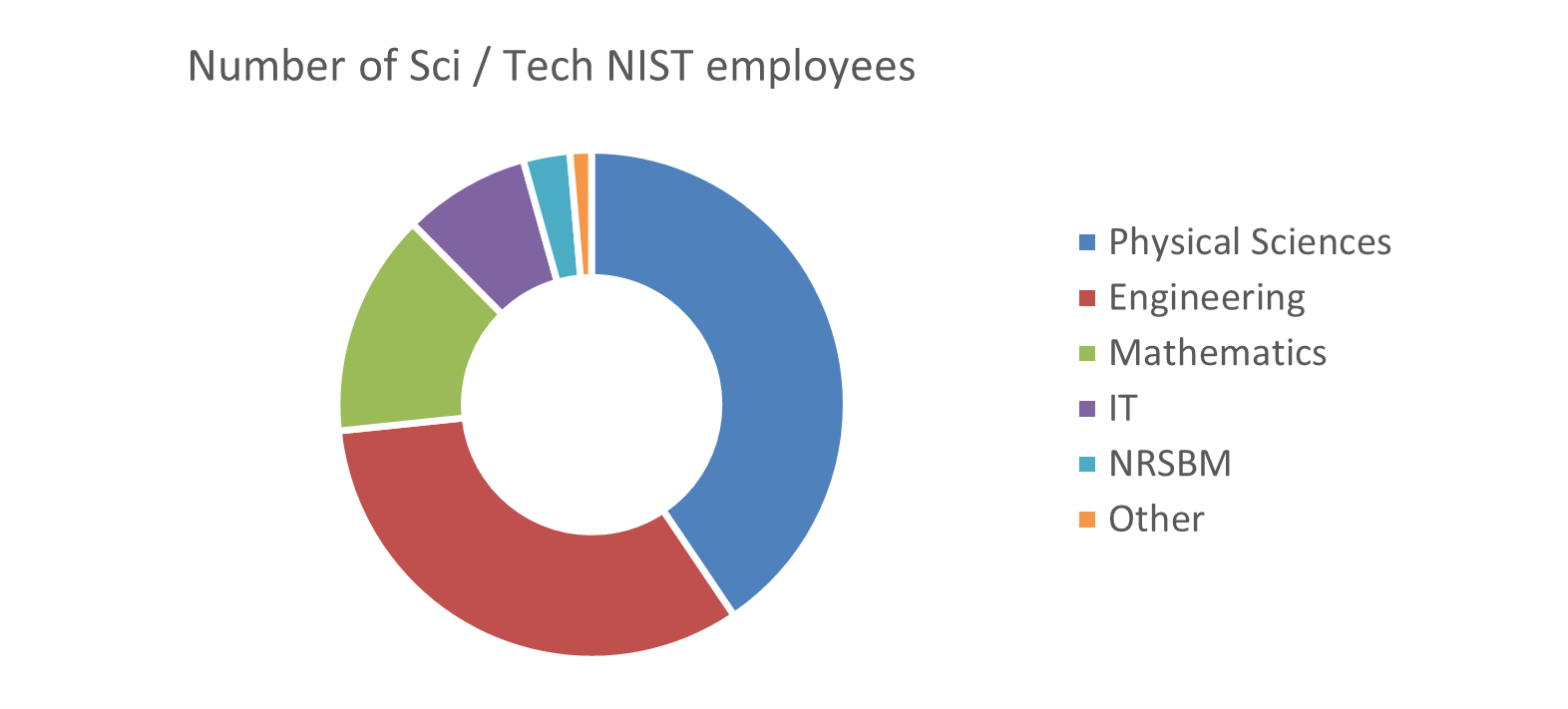
Figure 1. Distribution of NIST scientific and technical personnel. Source: Government Accountability Office (GAO).
NIST relies heavily on a system of institutional memory and continuity of expertise. One of NIST’s major programs, for example, is chemical metrology, the detection and accurate quantification of molecules which might sometimes need to be measured at infinitesimally small concentrations. Chemical metrologists cannot be bought “off the shelf”—so to speak—because no graduate program in chemical metrology exists at any American university. Chemical metrology exists at NIST only because new chemistry hires are trained in-house by NIST chemists who have themselves become adept in the field. To take another example, the accuracy of atomic clocks has been a multi-decade project, involving several generations of scientists. The outcome of this continuity of intellectual culture has been a seven-orders-of-magnitude improvement in the precision of atomic clocks: timekeeping presently is ten million times more precise than when atomic clocks were invented. This institutional memory permeates all the scientific activities at NIST. It is an essential part of NIST’s scientific culture, therefore not lightly to be tinkered with.
Is NIST a hotbed of systemic sexism?
It’s being tinkered with nonetheless. Despite its stellar scientific reputation, there seems to be something amiss at NIST, because it is facing difficulty in staffing its science programs with qualified people.
In the last five years, about 800 employees have left NIST, 48 percent having resigned and 24 percent having retired (Figure 2). NIST’s difficulty in finding suitable replacements is serious enough to have prompted a study by the Government Accountability Office (GAO) on the causes and possible solutions. The study (hereafter the GAO study) cited numerous causes for the staffing problems, including difficulty of navigating the red tape of federal hiring procedures.
However, a major focus of the GAO report claimed that the recruiting and staffing problems stemmed from a culture of white male-dominated patriarchy at NIST. Apparently, a “Chilly Climate” for women and minorities prevails at NIST, making it difficult to recruit and retain qualified staff. This claim relied heavily on three internal NIST studies, which purported to document the NIST “Chilly Climate.” The solution, according to these reports, was social justice tinkering. Tinkering with—it should be reiterated— the long-standing and effective culture of science at NIST.
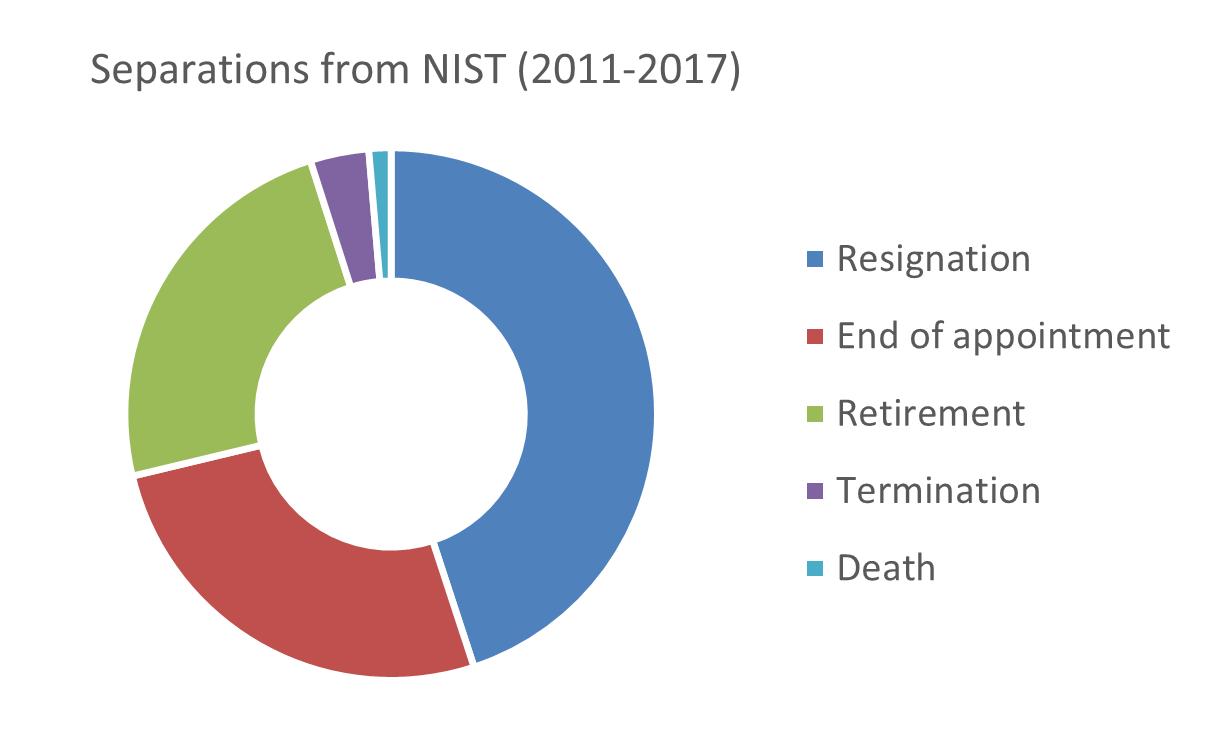
Figure 2. Separations from NIST broken down by reason for separation, Source: Government Accountability Office.
The internal NIST studies drew upon data provided by NIST’s HR department, as well as results of a survey sent to 3,300 NIST employees. Although purporting to be objective and strongly data-driven, the internal NIST studies suffer from significant problems. They accept a priori—the trope that objectivity in science is evidence of male privilege and “masculine” ways of doing science, for example. Meanwhile, sex disparities among NIST scientific professionals and technical staff are taken as prima facie evidence of systemic sexism. The conclusion precedes the evidence, in other words, even as the data show a more nuanced picture.
At NIST, men are the clear majority in the fields of physics, engineering, and mathematics, while women are slightly in the majority in the biological sciences. Systemic sexism is said to explain these differences, yet alternate explanations are not entertained.
For example, the demographics of NIST’s recruitment pool—doctoral students in the relevant scientific fields—are very similar to the demographics of NIST’s scientific and technical personnel. Male doctoral students in physical science, mathematics, and engineering are more numerous than women doctoral students. In the biological sciences, there are more female doctoral students than men (Figure 3). This in turn mirrors the demographic distribution among university faculty, who both train and recruit students that make up NIST’s recruitment pool. A random selection from NIST’s recruitment pool would produce the same demographic patterns among the NIST scientific staff. It is hard to see systemic sexism at work here.
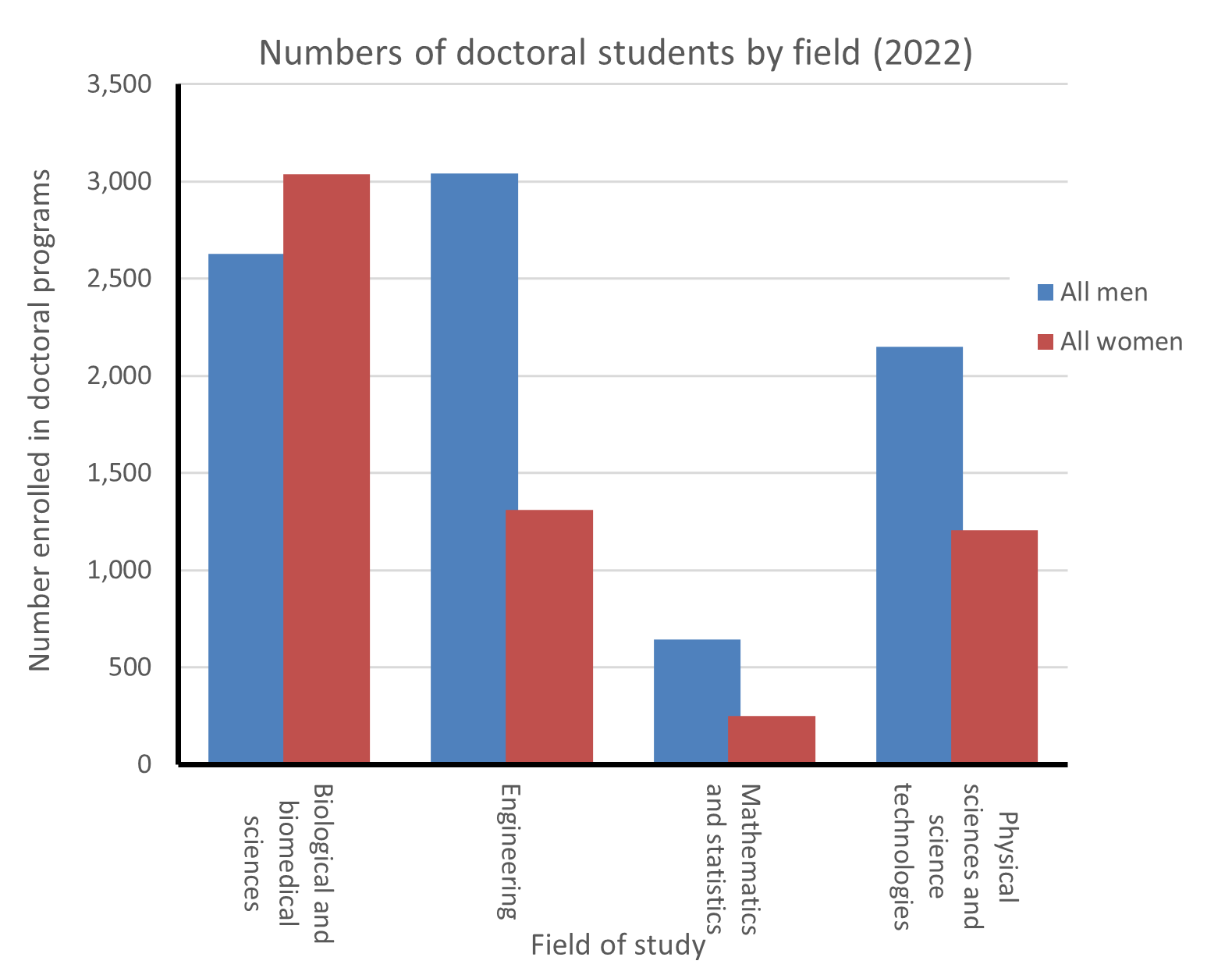
Figure 3. Sex disparities in doctoral students in the sciences. Source: National Center for Education Statistics: Tables 324.30 and 324.35.
The NIST internal reports then turn to disparities in advancement and pay—how long it takes to advance through a person’s pay band or how likely it is for men and women to take on leadership positions. Like the infamous and erroneous pay gap , the more likely explanation is found in institutional demographics. In terms of starting salary, likelihood of promotion, and performance ratings, women are at—or are approaching—rough parity with men. In recent years, the balance is tilting slightly in favor of women. According to the authors of NIST’s internal reports, this is not fast enough.
These reports set in motion at NIST an aggressive program of favoring younger women to advance into positions of leadership and high salary. That is short-sighted. The strongest predictor of salary level and leadership at NIST—as it is in most organizations—is seniority. Demographics will go a long way to explaining disparities in salary and advancement since most women at NIST have been recruited more recently compared to most men. As scientists in older cohorts retire or die, sex disparities in income and leadership level will disappear. Furthermore, disparities in income and rank may actually be a feature of an organization like NIST—not a bug. NIST relies heavily on hard-won institutional memory and expertise. Seniority in the scientific staff also represents intangible value, reflected in salary and retention incentives. One need not invoke barriers to the advancement of women, even as NIST is aggressively promoting women.
The data-driven approach to the “Chilly Climate” narrative, having come up a damp squib, the three studies turned to smoking out “holistic” evidence of a climate of sexism at NIST. This holistic hunt for sexism was based upon response to survey questions, which included narrative answers. The organization of the survey is telling. The survey questionnaire parceled questions into eight categories (Table 1). According to the authors, their survey revealed an “overwhelming … feeling of frustration” among women, for which the studies recommended remediation.
The survey itself is rampant with bias. The survey did not represent an unbiased cross-section of NIST employees. The completion rate was only 33.2 percent of NIST employees. Of these, a disproportionate number of completed surveys came from women, despite women being in the minority of NIST employees. The questions were also biased (Table 1). Of the eight categories of questions, categories two and eight could be considered neutral, accounting for a total of 13 questions. The other six categories contained leading questions, of the type “I have been [fill in bad behavior] because of my gender (italics added).” There were 49 questions of this type. Thus, the majority of the questions were biased toward painting the favored narrative of “overwhelming frustration” among female NIST employees.
Delving into the questions themselves, I did a statistical analysis of my own to see whether men and women differed in their responses.[1] For twenty of the questions, men’s and women’s responses did not differ statistically. Where they did differ, it was in response to prompts that were either leading, or relied upon unverifiable impressions. For example, in response to the question “I have been interrupted in a meeting because of my gender,” both women and men answered that they had, with more women than men voicing this complaint. No doubt rude interruptions at meetings occur, but in the absence of other evidence, such as a written note or corroboration of spoken words, an interruptee cannot objectively claim that the interruption was “because of my gender.” When the prompting question was more objective, as in “I have witnessed women and men being treated differently, positive responses (that different treatment had been observed) were fewer and no longer differed between women and men. It’s difficult to draw a culture of systemic sexism from the responses to such a biased survey.
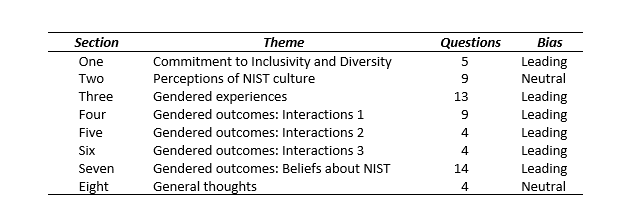
Table 1. Question categories in TS study. Appendix A
That did not stop the authors in their quest for evidence of systemic sexism at NIST, however. Each of the eight categories contained at least one open-ended question inviting a narrative response. The bulk of the TS report consists of excerpts from these narrative responses. Out of between 1,000 and 1,100 returns, one hundred and seventy-nine narrative responses were highlighted for inclusion in the report, which reflects a selective bias. For example, women’s narrative responses were oversampled: even though men are in the strong majority of respondents, 55 percent of the narrative responses chosen for inclusion were from women. Included responses were also disproportionally drawn from categories containing leading questions (Table 1).
I went through each of the included narrative responses and classified them as either supportive of the claim of systemic sexism, or skeptical of it. Of included women’s narratives, 86 percent were supportive. Of men’s narratives, 47 percent were supportive (Table 2). In short, the level of skepticism among male scientists was considerably higher than among women scientists.
There is an additional noteworthy bias. The largest proportion of survey returns came from individuals who had been at NIST for one to four years. For individuals who had been employed at NIST for more than 15 years, returns diminished sharply. In other words, the inexperienced had a louder voice in the survey compared to the experienced.

Table 2. Selection bias in TS study in responses to narrative questions.
Finally, the data reveal what is the most prevalent sex bias at NIST. While men are the clear majority among the scientific and technical employees, women are the clear majority among administrative (70%) and administrative support (77%) employees.
Despite all these biases and problems with the data, the authors of the study draw a firm conclusion: “imbalances contribute to the inequity of women at NIST, particularly with respect to the broken rung and the glass ceiling.” To paraphrase the famous aphorism: it’s the foregone conclusions, not the facts, that are the real stubborn things.
Social justice tinkering at NIST
Despite the obvious flaws in the NIST internal reports, they have provided the foundation for a strategic plan for Diversity, Equity, Inclusion, and Accessibility (DEIA) for 2022 through 2024. The strategic plan includes the usual remedies of preferences for women in hiring, pay, and rate of advancement through ranks and into leadership positions. The question asks itself: how did a scientific agency like NIST—dedicated as it is to good data and rigorous objectivity—build a strategic plan around such flimsy and biased evidence?
The short answer is that NIST—like many other organizations—has been captured by the Diversity, Equity, and Inclusion agenda. This has driven a shift in focus from NIST’s primary mission—science-based standards for measurement—to a social justice agenda. The three reports discussed above were part of this shift—their flimsiness notwithstanding.
Two related factors have driven this shift in focus. The proximate factor has been two executive orders from President Biden: EO 13985 (Advancing Racial Equity and Support for Underserved Communities Through the Federal Government, 20 January 2021) and EO 14035 (Diversity, Equity, Inclusion, and Accessibility in the Federal Workforce, 25 June 2021). Both revoked President Trump’s executive orders EO 13950 (Combating Race and Sex Stereotyping, 28 September 2020) and EO 13958 (Establishing the President’s Advisory 1776 Commission, 5 November 2020). Biden’s executive orders thus established DEIA as a “whole-of-government” initiative. Managers of all agencies, no matter their mission or culture, were compelled to adopt the discriminatory agenda of social justice tinkering.
A second factor has been a change in the culture of administration at NIST. Early in its history as the NBS, NIST directors were chosen from staff, who served long terms (Figure 4). Beginning in the 2000s, NIST directors have been appointed as Under Secretaries of the Department of Commerce, and so have increasingly become political appointees, drawn from administrative postings in other government agencies or universities. In short, the administration of NIST has become the bailiwick of professional managers who have little understanding of science, or of the unique science-based culture at NIST. As is increasingly the case throughout the science ecosystem, scientists are coming to be regarded as incompetent at management, so reducing scientists to employees to be managed by a professional managerial class—predominantly female in the case of NIST. This shift of attitude inevitably leads to degradation of scientific mission. This may be one of the reasons NIST is experiencing high levels of resignations and retirements (Figure 2).
The transformation of administration has arguably compromised the intellectual independence of NIST. Long-serving directors could provide continuity and support that is not possible when directors serve much shorter terms. Aside from compromising ongoing support for long-term scientific goals, there was a time when a director at NIST could stand up against political pressure to compromise the findings of the scientific staff, as in the “AD-X2 controversy.” Presently, the “whole-of-government” approach favored by the current administration means that NIST staff are now deliberately made to dance to the tune of its political overseers. This means that scientists, in particular senior, white, male scientists—to reiterate, NIST’s most valuable cohort—might be nominally independent, but nevertheless face subtle and ongoing pressure to conform to the political agenda: reverse microaggression and systemic reverse sexism, if you will.
Take, for example, the conjuring of the “Chilly Climate” trope at NIST. Even the NIST DEIA strategic plan points out the long history of women scientists and technicians employed there. Instead of giving credit for the conscientious efforts over the years to be open to all who have the talent to undertake the daunting scientific program at NIST, the highlighted narrative responses in the TS report denigrates them: alleged “lack of respect,” “bullying” by “freaking white men,” of a “meritocracy trap” that holds back women and minorities, “incompetent” men “promoting their incompetent buddies,” producing a “caste system” of scientists over support staff, which imposes “just all kinds of X’s” across women and minorities. A white male senior scientist at NIST would understandably feel his experience, achievements, and hard-won expertise were being deliberately and unjustly painted in an unflattering light, this feeling likely reflected in the low rate of survey completions among senior scientific staff.
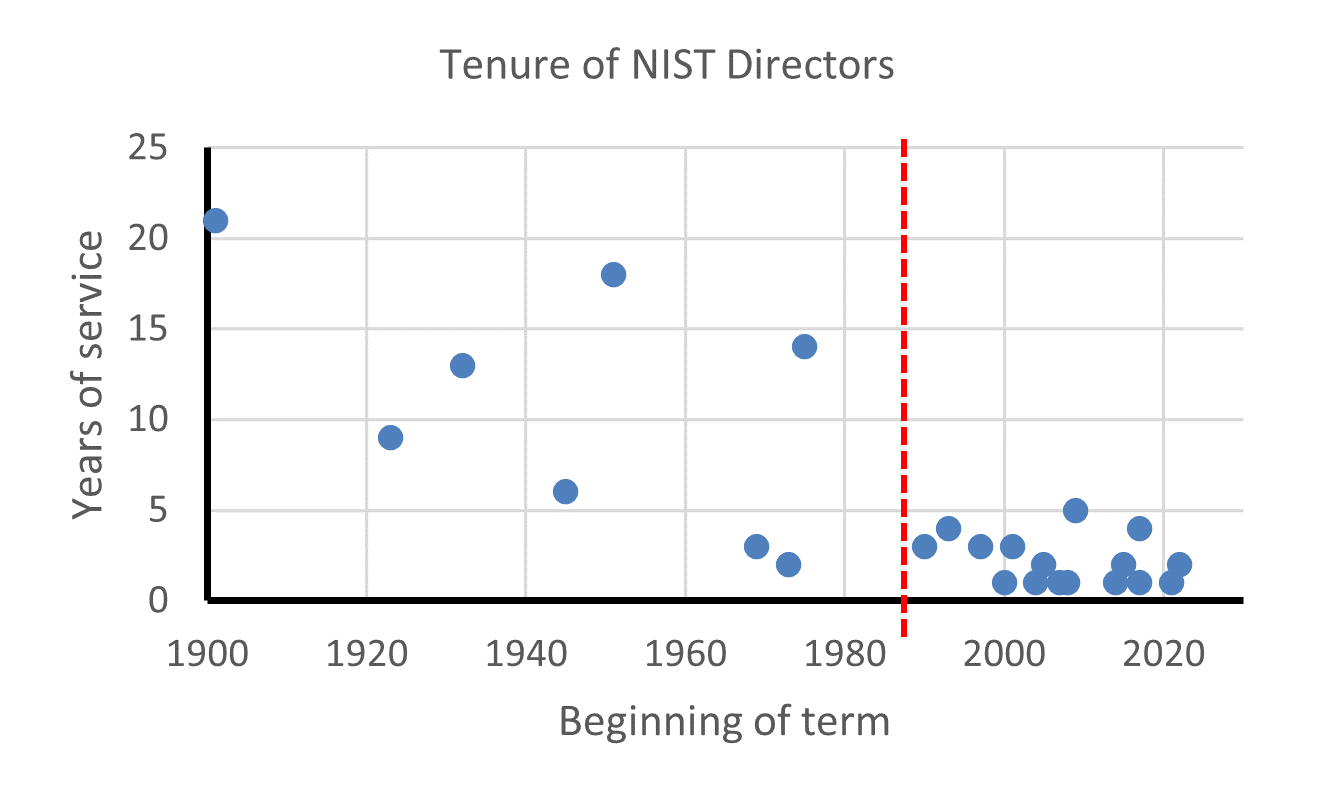
Figure 4. Tenure of NIST/NBS directors over time. Red vertical line is the year NIST succeeded the NBS.
What to do about the scientific civil service?
The US civil service is a delicate balancing act between a spoils system on the one hand—in which civil servants serve at the pleasure of elected officials—and on the other, independence from shifting political winds. The 1883 passage of the Pendleton Act tilted the balance to independence, replacing the civil service spoils system with a merit-based competitive process. This included protection from arbitrary dismissal if the political landscape changes. This has mostly proven to be a failure. The merit system has been largely undone over the years. Judging from patterns of campaign contributions, the civil service has become an entrenched bailiwick of one political party. Unionization has produced employment rules that do more to protect conformity—at best—and incompetence—at worst—rather than performance and merit. If the civil service is the deep state, as George Friedman has argued, the scientific civil service has become an entrenched instrument of political partisanship.
It’s hard to fault NIST’s nominal structures for protecting the intellectual independence of its scientific staff. Among the scientific staff, advancement through ranks is very similar to how scientists advance in the academy— ostensibly merit- and achievement-based. Senior NIST scientists even enjoy a kind of tenure. Yet, the rising dominance of the managerial mindset in senior-level administration at NIST, combined with a strong government desire to force scientists to knuckle under to political imperatives, is steadily undermining that.
Scientists in the civil service have societal value only insofar as their intellectual independence is respected and defended. As in the universities, the scientific civil service at NIST is seeing a slow degradation of the place scientists and intellectual independence have in their respective ecosystems. For both the universities and government agencies like NIST, this raises the idea that universities and government science agencies may not be up to the task of defending the most important attribute of their scientists: intellectual independence. As we have already suggested for academic scientists, perhaps our society would better be served if the scientific civil service were to organize into bodies that are independent of governments that no longer recognize their true value.
Photo by AndriiKoval — Adobe Stock — Asset ID#: 480931916
Why do females dominate the biological fields but no other STEM fields? Simple. Compared to all other STEM fields, the biological fields require virtually no mathematics. At my university an undergraduate biology major is required to only take two (lower division) statistics courses. That’s it. By contrast, an electrical engineering undergraduate major is required to take 4 quarters of calculus, a quarter of differential equations, an upper division quarter of statistics and a quarter of linear algebra. Moreover, many upper division courses (e.g., electromagnetics and control systems) require a firm background in these mathematic topics.
I find it interesting that those who have difficulty mastering mathematics claim “white privilege” and “male dominating thinking” is the reason why BIPOC and women are not present in larger numbers in STEM fields. Instead of working hard to acquire these skills, I guess it’s a whole lot easier to claim systemic discrimination.